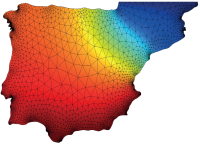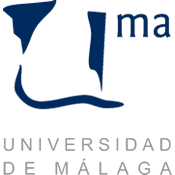I Iberian COMSOL Multiphysics Conference 2014

INTRODUCTION
The premier Iberian event for Multiphysics Modeling & Simulation. Connect with the Spanish and Portuguese COMSOL Multiphysics users community and participate in training opportunities and events explicitly designed for the academic and engineering community.
The Iberian COMSOL Multiphysics Conference 2014 will be held in Málaga, Spain, on May 29. The official language of the conference is English. It is co-organized by the University of Málaga, Addlink Software Científico and COMSOL AB.
You’re invited to present your work at the Iberian COMSOL Multiphysics Conference 2014 on multiphysics modeling and simulation. Oral and poster presentations highlight achievements in multiphysics modeling and simulations using COMSOL. Submission of papers is recommended but not mandatory. Your published work will be recognized by a huge audience.
In addition to the main conference, we have programmed two optional training courses that complements it:
- Wednesday May 28 - COMSOL Multiphysics Course for Beginners.
- Thursday May 29 - Iberian COMSOL Multiphysics Conference 2014.
- Friday May 30 - COMSOL Multiphysics Advanced Course.
TOPICS
| Group A: Electrical | Group B: Mechanics and Heat | Group C: Fluid and Chemical | Group D: Miscellaneous |
|---|---|---|---|
|
|
|
|
IMPORTANT DAYS
Registration dates:
Early registration
Until April 30th, 2014
Late registration
From May 1st, until May 15th, 2014
Final abstract submission: May 5th
Abstract approval notification: May 8th
Paper submission and Author registration deadline: May 16th
AGENDA
Morning:
|
9:00 |
Registration opens |
|
9:15 - 9:30 |
Welcome and introduction |
|
9:30 - 10:00 |
Keynote presentation.- News in COMSOL 4.4. Anders Ekeroth. COMSOL AB, Sweden. |
|
10:00 - 10:45 |
User's presentations. Session 1. |
|
10:45 - 11:15 |
Coffee break |
|
11:15 - 12:15 |
Solver’s Minicourse. Anders Ekeroth. COMSOL AB, Sweden. |
|
12:15 - 13:00 |
User's presentations. Session 2. |
|
13:00 – 13:30 |
Keynote presentation.- Simulation of discharges in gaseous particle detectors for CERN’s RD51 collaboration. Paulo Jorge Ribeiro da Fonte, LIP - Laboratory of Instrumentation and High Energy Particle Physics, Portugal |
|
13:30 - 15:00 |
Lunch |
Afternoon:
|
15:00 - 15:30 |
Keynote presentation.- CFD Modeling for Hydrogen Energy Technologies. Ernesto Amores Vera. Research Department, National Hydrogen Centre, Spain. |
|
15:30 - 16:30 |
User's presentations. Session 3. |
|
16:30 - 17:00 |
Keynote presentation.- Using COMSOL Multiphysics to Describe Solid/Liquid Flows. Maria Graça Rasteiro. Universidade de Coimbra, Portugal. |
|
17:00 - 17:30 |
Coffee break |
|
17:30 - 18:00 |
Keynote presentation.- Multiphysics Simulations for Geosciences and Environmental Engineering. Elena Abarca. Amphos 21, Spain. |
|
18:00 - 19:00 |
Poster session. |
|
19:00 |
Conference ends |
|
20:30 |
Conference Cocktail |
KEY NOTES
 |
Anders Ekerot COMSOL AB, Sweden. M.Sc. in engineering physics, specialized in scientific computing. Anders has been with COMSOL since 1999, starting out at the development department. He currently works with global technical support and product development at the Swedish office. |
| -------------------------------------------------------------------------------------------------------------------------------------- Key Note Presentation.- News in COMSOL 4.4 Topics New Windows User Interface, Mixer Module and New functionality in established products. |
|
| -------------------------------------------------------------------------------------------------------------------------------------- Solver’s Minicourse Abstract COMSOL Multiphysics gives precise control over the way in which your multiphysics models are solved. This minicourse covers the fundamental numerical techniques and underlying algorithms used, and explains the reasons behind the default solver settings. Building upon this knowledge, attendees will learn various techniques for achieving or accelerating convergence of nonlinear multiphysics models. |
|
 |
Ernesto Amores Vera Research Department,CNH2 – National Hydrogen Centre, Spain. Graduated in Mechanical Engineering at Castilla-La Mancha University. Later he joined a company dedicated to PV solar energy. Since 2010, he works in the Research Department at Centro Nacional del Hidrógeno (CNH2) on several aspects of hydrogen energy and simulation CFD applied to investigate electrolyzers, fuel cell and safety issues of H2 technologies. He has assisted to several COMSOL Conferences and in 2011 the CNH2 received the “Best Paper Award” for the article “Study of an alkaline electrolyzer powered by renewable energy” |
| -------------------------------------------------------------------------------------------------------------------------------------- Keynote presentation.- CFD Modeling for Hydrogen Energy Technologies Abstract Hydrogen is an ideal energy storage system for the future. It can be produced from Renewable Energy (RE) surplus and later it can be used to produce electricity through a fuel cell. In this way, H2 production allows us to reduce emit greenhouse gases. However, transition to a RE-H2 requires a large R&D effort to improve technologies for production, storage and use of H2. In this sense, the development of models using simulation CFD software is key to achieving the H2 economy. For example the modeling of an alkaline electrolysis cell powered by a PV-module using “Electric Currents” and “Two phase-flow” modules of COMSOL; or the study of H2/H2O separation considering laminar or turbulent flow are strategic models to predict the behaviour of these technologies. |
|
 |
Elena Abarca Amphos 21, Spain. Elena received her B.Sc. in Geology, M.Sc. in Hydrogeology, and Ph.D. in Civil Engineering. She is Project Manager and Senior Consultant at AMPHOS 21. She was previously a Postdoctoral Associate at MIT with 11 years of experience in numerical modeling of groundwater flow and contaminant transport in porous media. She has a wide experience in numerical modeling of groundwater flow and transport of (conservative and reactive) contaminants in porous media using COMSOL Multiphysics. |
| -------------------------------------------------------------------------------------------------------------------------------------- Keynote presentation.- Multiphysics Simulations for Geosciences and Environmental Engineering Abstract Porous media flow simulations for geoscience applications are characterized by coupled processes occurring over very different spatial and temporal scales. We present some multiphysics simulations accounting for groundwater flow and reactive transport processes occurring in complex geological media for applications in the nuclear waste disposal, mining and oil and gas industries. For coupling subsurface flows and geochemical processes, we have developed the interface iCP, which couples COMSOL Multiphysics and the geochemistry code PHREEQC. |
|
 |
Maria Graça Rasteiro Universidade de Coimbra, Portugal. Professor of Chemical Engineering. She did her PhD in Chemical Engineering in 1988, and it was focussed in the topic of Hydraulic Transport. In 2012 she was awarded the aggregation degree in the field of Chemical Engineering. She is, presently, coordinator of the Research Center on Chemical Processes and Forest Products Engineering (CIEPQPF) at the University of Coimbra. Her field of expertise is Particle Technology, with a special focus on studies of particle/particle interactions (both modeling and experimental) and multiphase flows. Under her direction, three PhD students have been developing, in the last years, their thesis in this last domain, studying the flow of solid/liquid suspensions (spherical particles and suspensions of cellulose fibres) with the aid of COMSOL Multiphysics for the numerical simulations. |
| -------------------------------------------------------------------------------------------------------------------------------------- Keynote presentation.- Using COMSOL Multiphysics to Describe Solid/Liquid Flows Abstract A great number of industrial applications heavily depend on the conveying of particles in pipelines. Amongst the ever increasing number of fields where particle conveying is of great importance we can outline the production of chemicals, energy, pharmaceuticals or foodstuffs, papermaking, composites and also the transportation of minerals and wastes. The team of CIEPQPF working in this field has been dealing with both the flow of concentrated fibre suspensions and of concentrated suspensions of spherical particles. The work which will be presented in this lecture details numerical studies using the Mixture Model present in COMSOL Multiphysics to simulate the behaviour of concentrated solid-liquid suspensions conveyed in pipelines. This model was employed for neutrally buoyant and heavy particles, with varying sizes and particle concentrations. In order to be able to describe adequately these flows, several modifications had to be introduced in the Mixture Model. With these modifications good agreement with experimental data was obtained. These modifications depend on the type of particles being conveyed, buoyant particles or heavy particles and, in general, on the flow regime. |
|
 |
Paulo Jorge Ribeiro da Fonte LIP – Laboratory of Instrumentation and High Energy Particle Physics, Portugal. Paulo Fonte is professor at ISEC-Instituto Superior de Engenharia de Coimbra and researcher at LIP-Laboratory of Instrumentation and High Energy Particle Physics, Portugal. He and his group at LIP have been on the front line of the development of timing Resistive Plate Chambers, which opened the way to much more economic time-of-flight particle detectors, featuring excellent time and position resolutions, compact mechanics, magnetic field compatibility and large-area capability. COMSOL Multiphysics is often used for modelling different aspects of such detectors. |
| -------------------------------------------------------------------------------------------------------------------------------------- Keynote presentation.- Simulation of discharges in gaseous particle detectors for CERN’s RD51 collaboration Abstract The RD51 Research &Development collaboration, based at CERN, aims at facilitating the development of advanced gas-avalanche detector technologies (gaseous detectors) and associated electronic-readout systems, for applications in basic and applied research. The movement of electrical charges in several micropattern gaseous detectors, leading to avalanches and eventually to “streamer” discharges is here modelled in COMSOL Multiphysics within a hydrodynamic model, yielding insights into fundamental features of these detectors. |
|
ORGANIZERS
 |
 |
 |
Descripción del evento
| Inicio | 29-05-2014, 9:00 |
| Clausura | 29-05-2014, 21:00 |
| Lugar | Universidad de Málaga. Edificio Rectorado |